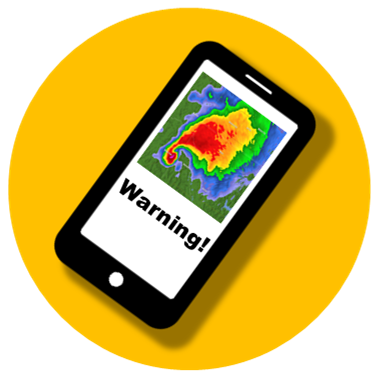
Isolated to scattered severe thunderstorms may produce large hail, severe wind gusts, and heavy rain and isolated flash flooding across portions of the southern and central Plains. Showers and thunderstorms are expected to linger cross the South the next couple of days. Heavy showers are creating a flash flooding threat around Kauai and Niihau, Hawaii. Read More >
Kansas experiences a wide variety of summertime severe weather, including: tornadoes, damaging winds, large hail, and flash flooding. Residents are encouraged to use this week to review their severe weather safety plans. Practice what you would do as if the event was REAL.
For those wishing for a printable version of the 2025 Kansas Severe Weather Preparedness Packet download that HERE.
We will be focusing on several different severe weather safety topics through the week.
|
Monday Preparedness |
Tuesday Flood |
Wednesday Tornado |
Thursday Hail/Wind |
Friday Lightning |
 |
||||
|
Preparing for an event starts now! |
Floods kill more people in the United States each year than any other thunderstorm-related hazard. Many flood deaths are the result of people driving into flooded roads. |
Tornadoes pack some of the fastest winds on Earth and are deadly to anyone caught in their path. Kansas averages 95 tornadoes per year but has seen up to 187, with the peak tornado season running from April to June. |
Damaging winds and large hail are two other weapons in a storm's arsenal. Hail can exceed softball size and straight-line winds can down trees & destroy property. They often garner less respect than tornadoes, but are just as deadly. |
Every lightning strike can be deadly. Lightning strikes the U.S. 25 MILLION times and kills 47 people on average each year. Many of these deaths occur outdoors and are preventable.
|
| Public service announcements courtesy of Bill Kurtis | ||
 |
||
Interested in Learning More About Severe Storms?
Weather Spotter's Field Guide - An Excellent Source of Information